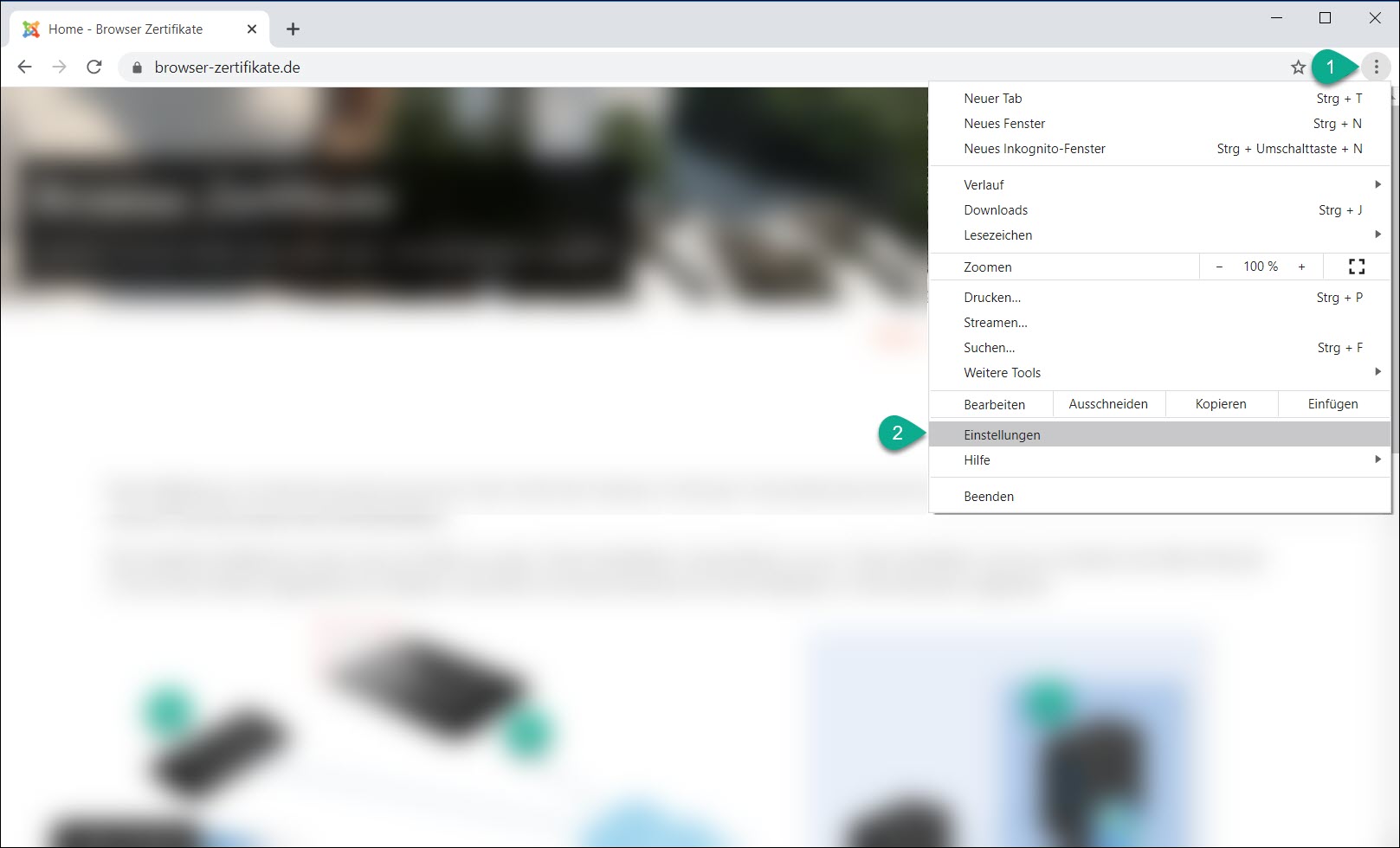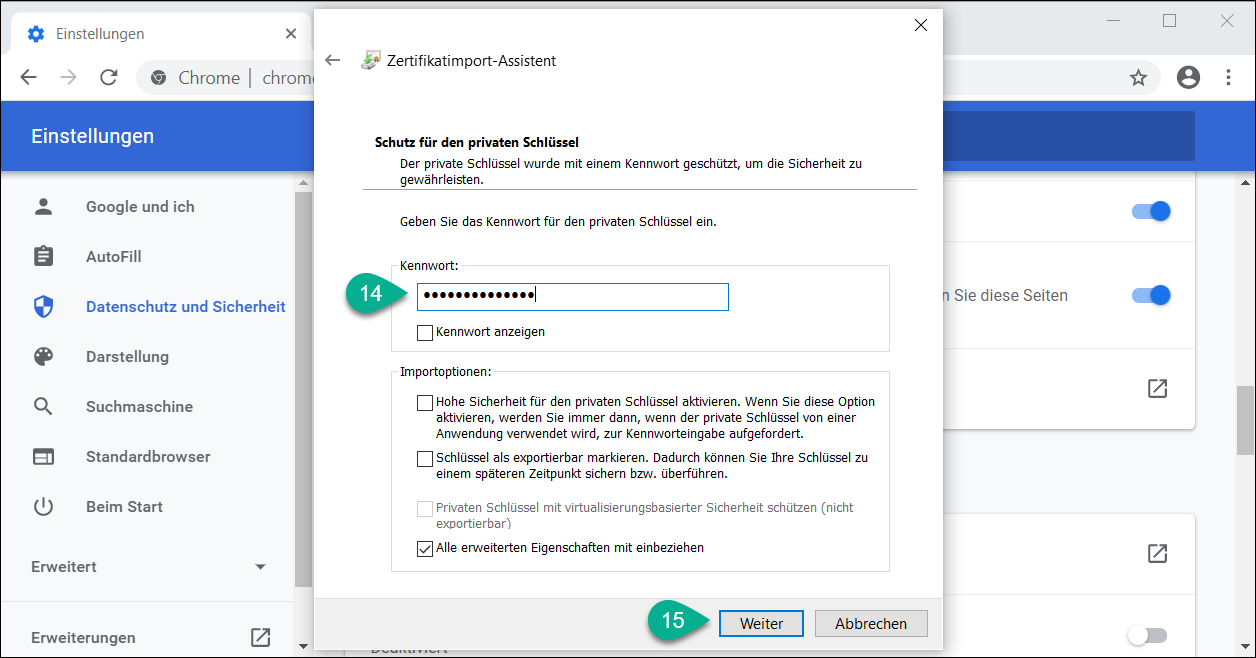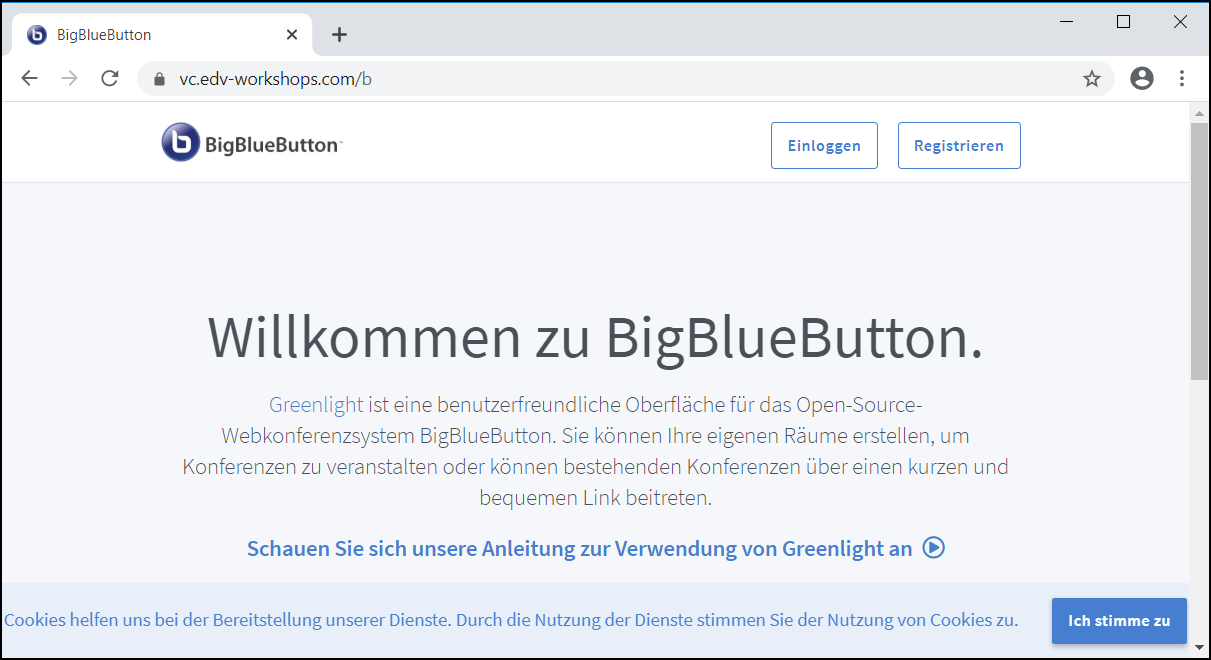The most widely used browser in the world
Chrome under Windows
 The browser is available for different platforms (Android, iOS, iPadOS, macOS, Linux, Windows, ...). Here we look at the settings under Microsoft Windows.
The browser is available for different platforms (Android, iOS, iPadOS, macOS, Linux, Windows, ...). Here we look at the settings under Microsoft Windows.
To access pages with the chrome that require "client authentication" with a certificate, a corresponding certificate must be imported. In the example the URL "https://vc.edv-workshops.com" is to be accessed (the address does not exist).
If you have not imported a certificate, the error message "400 Bad Request - No required SSL certificate was send" or "403 Forbidden" will appear when the address is accessed.

Import client certificate
A certificate comes in the form of a *.p12 file, which you receive from the provider of the respective service, including a password, e.g. by e-mail. Save the file to any location (in the example, the file with the name "CERT_pattern_karl_v2.p12" is located in the "Downloads" folder).

Google Chrome uses the Windows certificate store, so the certificate will be imported into the Windows certificate store. Open the settings (2) via the three items (1) in the upper right corner of the browser.

Click on the down arrow (4) in the "Privacy" area (3).

Open the dialog "Manage certificates" (5).

In the dialog "Certificates" switch to the tab "Own certificates" (6).
Then click on the "Import" button (7).

The certificate import wizard opens. Click on the "Next" button (8).

Click on the "Browse" button (9).

Select the previously saved p12 file (10) and confirm your selection by clicking the "Open" button (11).

The path is transferred to the wizard (12). Click on "Next" (13).

In the next step enter the password for the certificate (14). Leave the options as set. Click on the "Next" button (15).

Own certificates" is suggested as the certificate store, this is OK. Click the "Next" button (16).

The data has been determined. Click on "Finish" (17).

The certificate has been successfully imported. Click on "OK" (18).

The certificate is now stored in the Windows certificate store. Close the dialog by clicking on the "Close" button (19).

The certificate is now installed.
Calling the page (with installed certificate)
Now the page (in the example https://vc.edv-workshops.com) can be opened. The browser now suggests the installed client certificate.

Click on OK.
The certificate is checked by the server and the page is opened (in the example an installation of the web conference system BigBlueButton).

The workshop is now complete.

 Deutsch (Deutschland)
Deutsch (Deutschland)  English (United Kingdom)
English (United Kingdom)